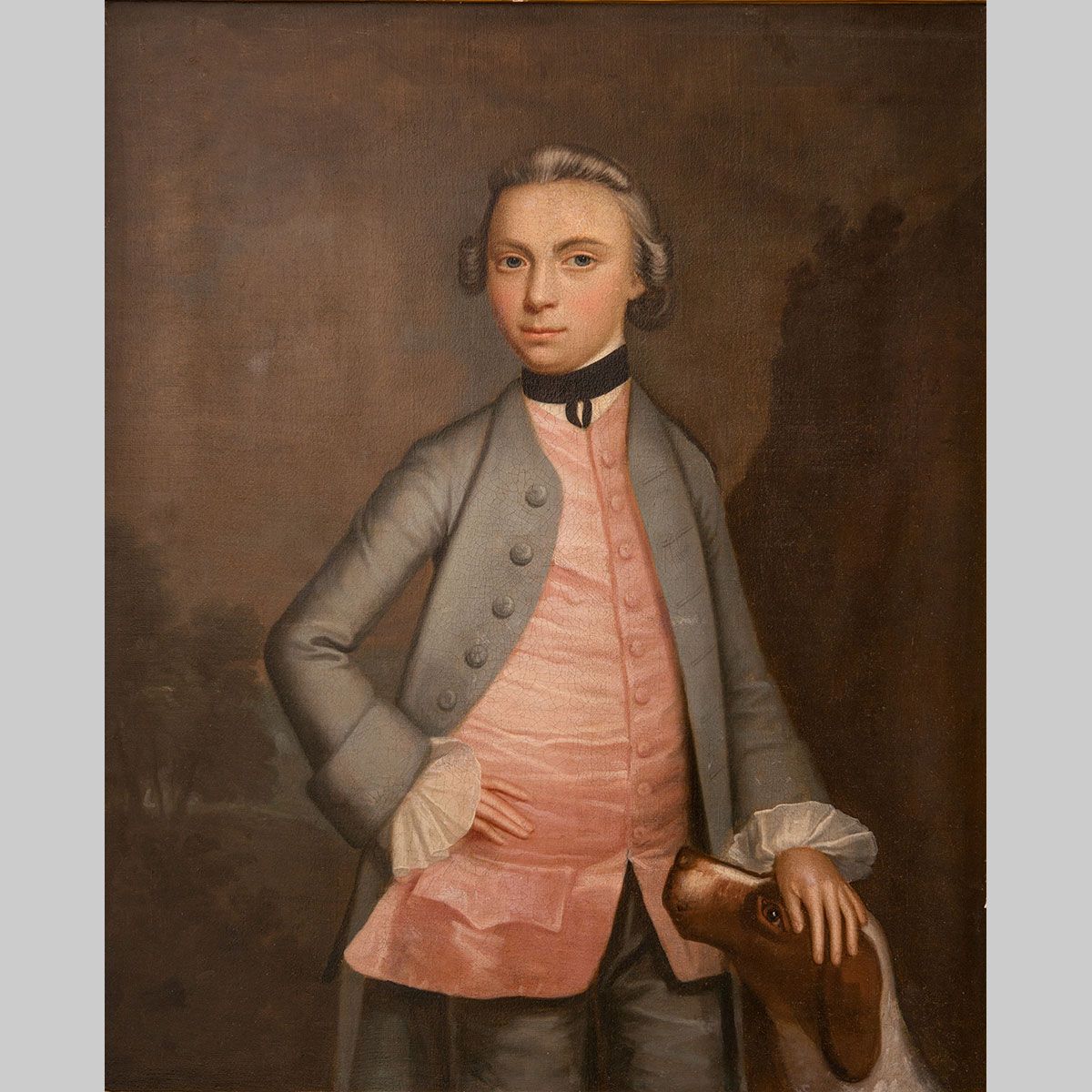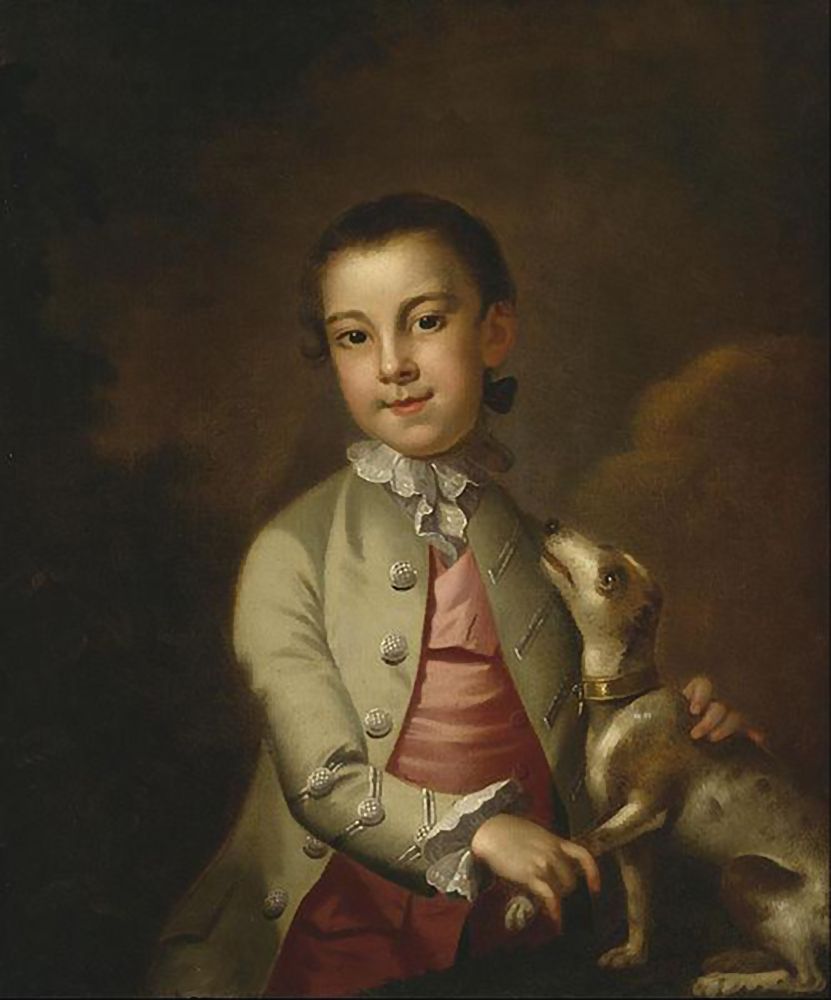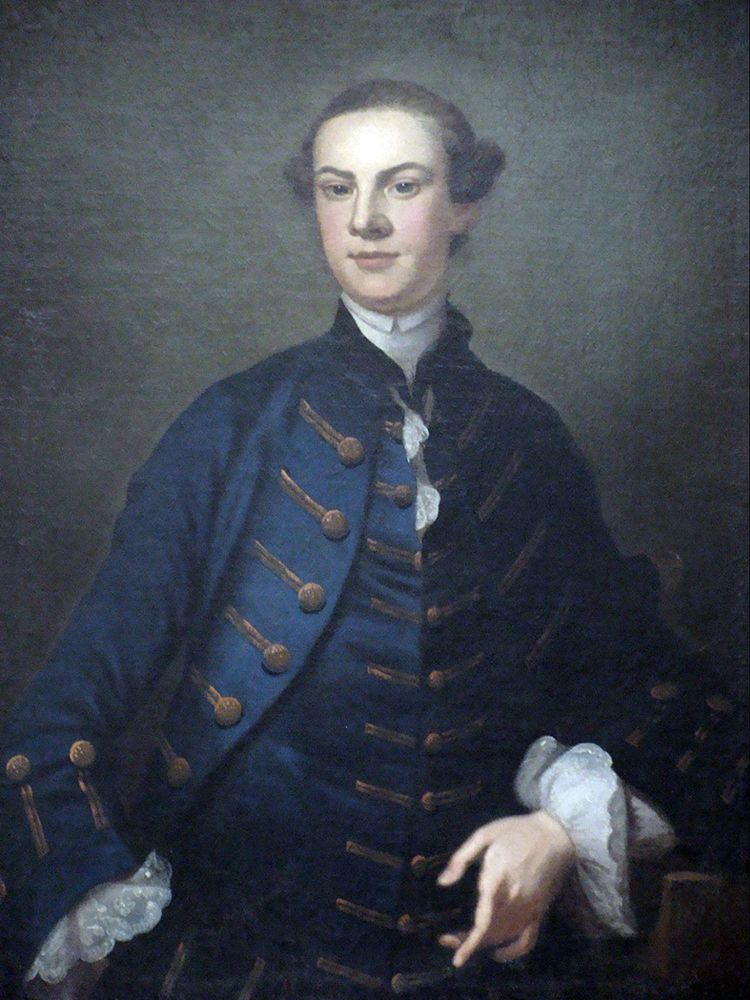John Wollaston (1710–75)
Portrait of a Boy, 1750s
Oil on canvas
McMullen Museum of Art, Boston College, Gift of Mr. & Mrs. Will J. Lessard, 1988.177

Nancy Netzer
Inaugural Robert L. and Judith T. Winston Director, McMullen Museum and Professor, Art History

Born and trained as a portrait painter in London, Wollaston moved in 1749 to New York, and subsequently to Philadelphia, Annapolis, Virginia, and Charleston where he painted nearly three hundred portraits of newly landed gentry and merchants in the then-fashionable English rococo style. His portraits, often unsigned, constitute a visual chronicle of nearly every influential aristocrat in colonial America at the time. Before he returned to London in 1767, Wollaston’s nimble poses, sumptuous fabrics, and pastel colors had influenced American portrait painters, including Robert Feke and Benjamin West.
Wollaston completed several portraits of the young scions of America’s leading families. Like the present sitter and William Holmes (see image) his well-born boys show off their family’s newly established prosperity in the colony. Often depicted with their hunting dog against the landscape of their family estate, they are dressed formally as adults in breeches, shirts with tight collars and flared sleeves, and finely executed silk waistcoats and jackets. With his body turned slightly to the left, his head in the opposite direction to engage the viewer, and his right hand on his hip, the present boy assumes the same posture as many of Wollaston’s standing men, like Ryland Randolph (see image).
This painting came to Boston College with a plaque on its frame attributing it to the Scottish artist John Smibert and identifying the sitter as the young George Berkeley (1685–1753), who became a distinguished philosopher and Anglo-Irish Bishop. Between 1728 and 1732 Bishop Berkeley moved from Ireland to Middletown, Rhode Island, where he became a plantation owner and enslaver He brought with him to Rhode Island John Smibert (1666–1751), whom he met for the first time in Italy in 1719–20, long after Berkeley would have been the age of the boy in the portrait. Thus, the frame’s plaque probably reflects a mendacious dealer’s attempt to enhance the painting’s appeal to an Irish-American buyer and, moreover, explains why it might have been given to Boston College.


